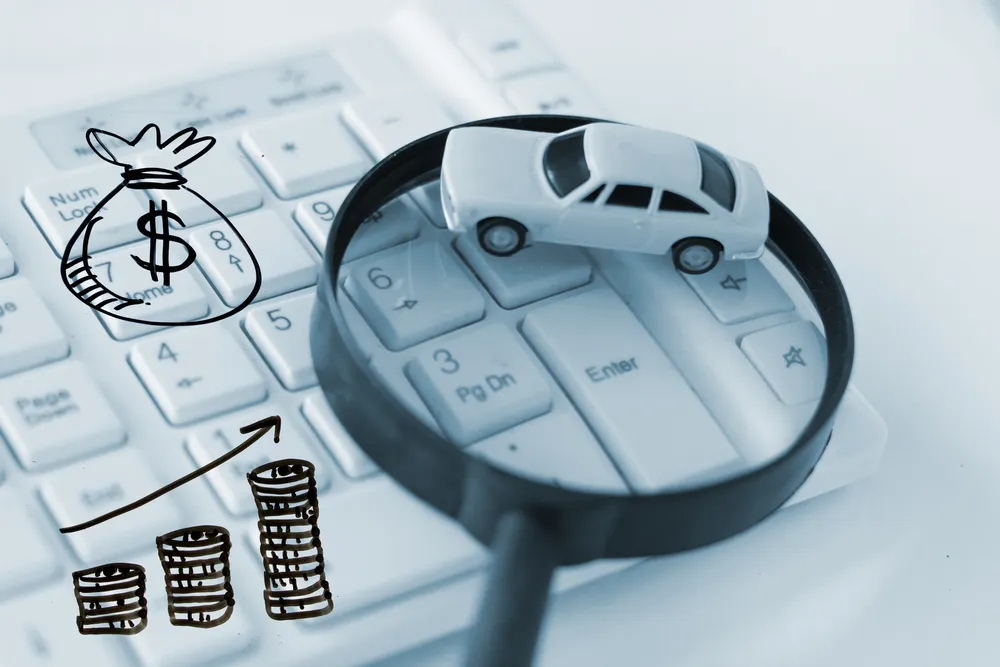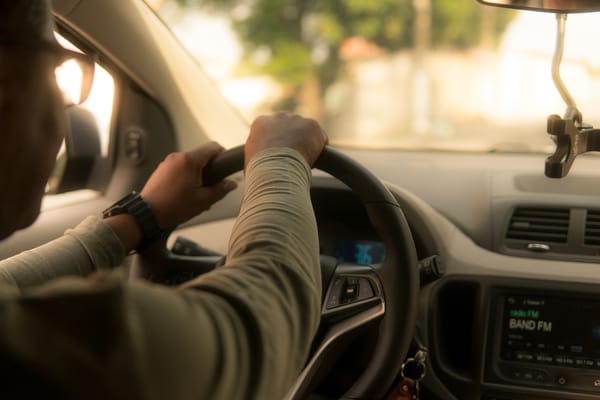A quick-start guide to taking over a car lease

Leasing a car can be a great and (comparatively) inexpensive way to get a new (or new-ish) car, at least for as long as the lease is in force. (The average car lease is only about three years long.)
Leasing a car is rather different from buying a car, though in both cases you’d make monthly payments. Moreover, taking over someone else’s lease—frequently called lease swapping—is different from both. But depending on your circumstances, financial situation, and the value you place on having a current car, lease-swapping could be a great option for you, as long as you know the pros and cons. This article will show you how.
What is leasing a car?
In order to understand lease swapping, it’s a good idea to understand what leasing a car is in the first place. (If you already know that, feel free to skip ahead.) Basically, leasing can be compared to renting a car. You sign a contract with a bank (who really owns the car) to drive it for a certain period of time—usually 12, 24, or 36 months (occasionally, leases can be longer or shorter than this).
While you do this, you are only permitted to drive it a certain number of miles a year (usually 12,000-15,000) to ensure reasonably controlled depreciation, and you make monthly payments to the bank to cover the cost of said depreciation (which is usually determined by projecting average financial value after the end of the lease, then dividing the percentage lost into monthly payments).
For example: Say a brand-new $25,000 car is assumed to be worth only 60 percent of its value after 3 years. This means it will have lost about 40 percent value, which financially is $10,000. Thus, a car lease requires you to reimburse the cost of depreciation over those three years of use, with additional taxes and fees, divided into a monthly payment over 36 months. Of course, this process would be a bit different if you are not working with a brand-new car, but not by too much.
Note that given the mileage limits, you have two options: You may raise the limits, but expect a higher monthly fee (since it’s based on depreciation, and higher mileage per year means more depreciation). Or, simply throw caution to the wind and drive as much as you want—but expect to pay a penalty for every mile driven over the limit, usually fifteen cents. And cars are only allowed to have “normal wear and tear” at the end of a lease (what that is specifically will be in your contract). Anything beyond that will be charged as well.
There are important things to know before leasing outright or lease-swapping, but we will get to them in time.
(Speaking of car renting: HyreCar connects car owners with people who want to rent them and drive them for Uber and Lyft. Sounds interesting? Find out more here!)
What is lease swapping?
Now that you understand the basics of what leasing is, we can discuss lease-swapping. This is essentially a transfer of paperwork where you take over the lease payments for someone else for the remainder of the lease period, and of course get to use the car for that time as well.
The original lease is thus relieved from all payments and responsibilities as regards their vehicle, and you are now legally responsible for all payments, maintenance, and everything else. You get to use the car for whatever amount of time is left on the lease, as long as you stay within the mileage limits (so you’ll have to know how many miles are left if you take over a lease mid-year).
Note that most third-party companies who connect current lessees with potential swappers do charge a fee (to both parties) and that in about 20% of swapped leases the original lease still legally retains some liability for the car. Exact details on all of these depend on the situation and the company used.
Why would someone want their lease taken over?
A variety of reasons. The two most common ones are the current lease either cannot afford their monthly payments, or they simply want a new car and need a fast way to get out of the lease. Sometimes the lessee no longer likes the car, or it becomes impractical if there is a new baby in the family or for another reason.
Why would I want to take over someone’s lease?
- Variety. Lease takeover can help you find more options from which to choose. If you only want to use a car that is a year or two old, this will be challenging if you’re looking at a used-car dealership. But since most leases are less than four years, you can find a pretty recent car, often without many miles on it.
- Price. Leasing a car is cheaper than buying it, since you’re only paying a percentage of the total cost. Taking over someone else’s lease is cheaper still, since generally the lease has been significantly paid by the prior lessee. (Most swapped leases are between 18 to 22 months in duration.) This combines nicely with the previous point, in that if you find a high-end car that has, say, two years left on its lease for $250 a month, as one leasing site put it, “You’d be paying $6,000 to drive a $60,000 car.”
- Flexibility. If you dealt directly with a leasing company, you would be saddled with a lease for the entire period. But say you only need a car to get you by until you buy your dream car. Or maybe you want to in-depth test-drive a car before you decide to buy it. You couldn’t take out an eighteen-month lease with a leasing company or a bank. But by taking over someone else’s you can find the right length of time and the right car.
- Incentives. Frequently, people looking for someone to take over their lease desperately need to get rid of the car and get out of the lease agreement. This urgency—often for financial reasons—makes them especially eager to get the lease under someone else’s responsibility, and as such they will frequently include cash or other incentives to draw potential lessees.
What are the potential drawbacks of taking over a lease?
While there are potential pitfalls to specifically assuming someone else’s lease, there are also potential drawbacks to leasing in general. Neither are necessarily deal breakers for most people, but they ought to be considered ahead of time to make an informed decision.
Drawbacks of leasing in general
- Cost. While leasing is initially less expensive than outright purchasing a car, over time it can actually cost far more. Recall that leases only last for about three years (less, if you assume someone else’s). This means every three years you will need to either buy or lease a new car, or pay end-of-lease pricing to purchase the leased vehicle (this price is usually determined at the time of the contract). If you lease frequently, you can pay as much or usually more than you would to simply buy a car outright.
- Lack of ownership. This one might be easily forgotten. Remember I said leasing is basically like renting a car? Well, that means that the payments you’re making simply make up the cost of depreciation. They’re not payments toward anything. When your lease expires, you’re no closer to owning the car, and more importantly you have no equity to leverage in purchasing one.
- Penalties. Besides the monthly payment, lessees can face stiff financial penalties for driving over the mileage limit; getting into a bad accident that damages the car significantly; failing to properly maintain the car’s interior and things like the tires, transmission, and brakes; you wear on the car enough that performance and appearance are significantly affected; or if you want to get out of the lease before it expires.
- Lack of freedom. Leases are fairly strict agreements between you and a bank to properly take care of their car in exchange for somewhat limited usage. The average driver might not find these expectations restrictive, but you will need to weigh your individual transportation needs, as well as unforeseen things like family emergencies and accidents, that could end up negatively affecting you with a lease that wouldn’t if you simply made regular payments towards ownership.
Drawbacks of lease swapping
- Even more mileage limits. Leases, of course, limit the number of miles the lessee may drive the car. But in taking over someone else’s lease, you not only have these limitations but also have less time in which to use them, which translates into fewer total miles for that car. This can also be complicated if you swap at an odd time of year. Let’s say someone has leased a car for only six months, but has two and a half years left on it when they decide to have you take over the remainder of their lease. Further, let’s assume they have a limit of 12,000 miles per year. Since the next two years have not happened yet, you can assume those miles are untouched. But how much do you have remaining for this year? This is why you need to know exactly how many miles have been driven on the car from the day the original lease was signed. It can save a lot of headaches later on from inadvertently driving past the yearly limit.
- Possible maintenance issues. In assuming the lease, you become responsible for any wear-and-tear that takes place, and with the possibility of fines if you significantly damage the car. Make sure there aren’t pre-existing issues that could cause a blow-up down the line. Have a mechanic look at the car before you lease it.
- Issues with appearance. Similarly, check to see that the paint, lights, mirrors, etc., are all in working condition ahead of time. You will be fined for someone else’s poor maintenance once the lease is in your name.
- Watch for surprises. The age of the Internet has enabled fewer people to get away with scams—and while most of the people on legitimate lease-swapping sites are perfectly nice people who want to get rid of their functional car, doing research is never a bad idea. Make sure you check with sites like CarFax.com or AutoCheck.com (note that these sites charge a fee) to get a detailed history report on the car—including things like accidents and whether the Odometer has been tampered with.
And, assuming the lease allows for it (and it probably does), why not consider being an Uber or Lyft driver in your newly-leased car? Here’s a guide to the best cities to Uber in.
If I decide I want to swap my lease, or assume someone else’s, what do I do?
The easiest way to do this is to go to industry standards like SwapALease.com or LeaseTrader.com. They list lessees by individual and car and meet high standards for both (note that the latter site prequalifies all potential buyers, while the former runs a credit check after reaching an agreement with an initial lessee).
A word about credit: You must have good enough credit to qualify for the lease in the first place, so if you have a poor credit score, don’t bother!
Different leasing requirements depend on the financial institution (a handful do not allow transfers under any circumstances, such as local credit unions or banks like Chase Auto Finance) and the car manufacturer. Remember above that in about 20% of cases the original lessee will be expected to legally retain some liability for the vehicle even after transferring the lease. This is called “post-transfer liability,” and it means the original holder could be held financially responsible if the new lessee defaults on any payments or for any additional fees they incur. Nissan, Infiniti, and BMW all require some form of this liability, and Acura and Honda do depending on your state of residence.
Generally, the original lessee must be willing to potentially assume liability if the second lessee defaults, and it is their responsibility to make sure their leasing institution even allows transfers, and if the trading company (the third-party company that connects lessees with potential assumers) has ensured the second lessee has good enough credit.
For the person assuming the lease, it’s their job to:
- Understand and can meet the requirements of the original lease
- Find out whether if the lease period extends beyond the warranty of the car (a vitally important and often-overlooked thing to note)
- Have the car examined by a qualified mechanic (good lease-trading companies will have services that do this)
- Make sure leasing the car via a trading site is cheaper than leasing a brand-new car (this can save sometimes significant amounts of money)
- Know whether the car they want to lease belongs to an individual consumer or a car dealership
- Be aware of potential end-of-lease fees—both penalty charges and turn-in fees (some car manufacturers charge a hefty return fee unless you agree to lease another car), and
- Know the history of the potential car, including any major repairs or accidents (here’s where things like CarFax.com come in).
And, if you want to lease a car to drive it for Uber, here’s a list of the best cars to do just that.
Conclusion
Leasing a car isn’t for everyone, and assuming another person’s lease isn’t either. But if you do your homework and are responsible, it could be a great way to save money, drive a swanky car, and even help someone in need. Do your research, weigh all the options, and do what’s best for your situation. Hopefully, this little guide has helped. Happy leasing!



